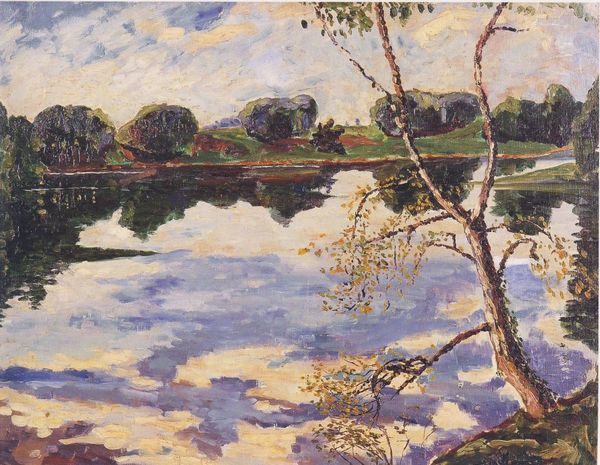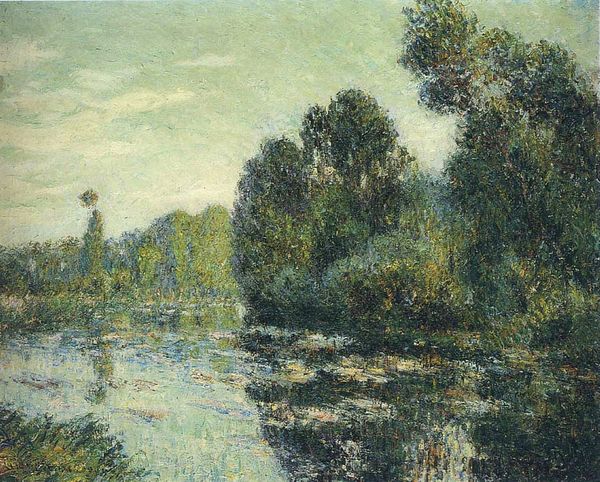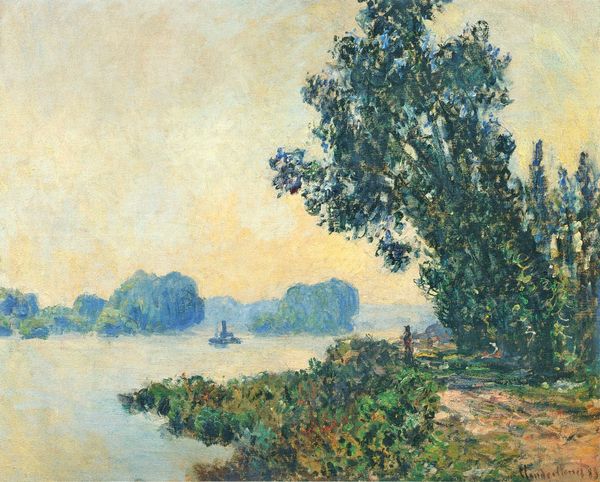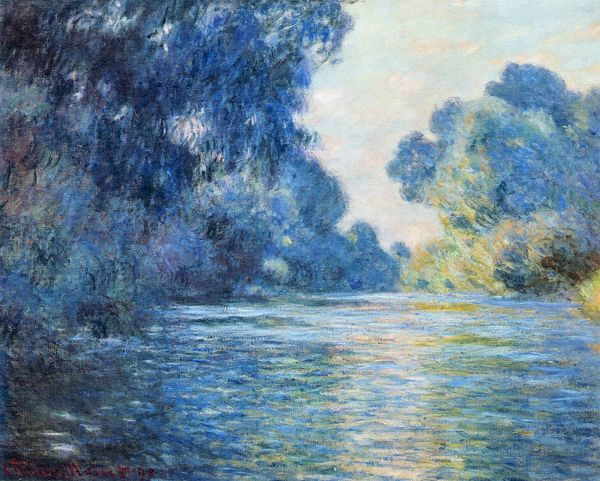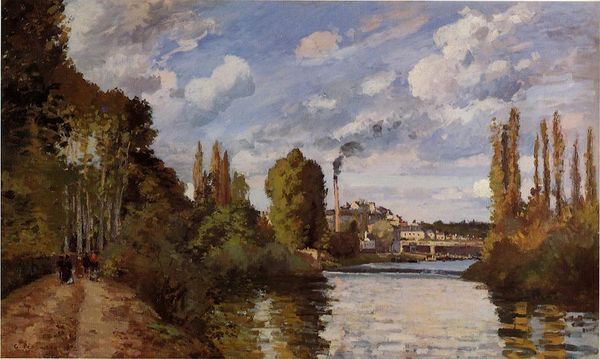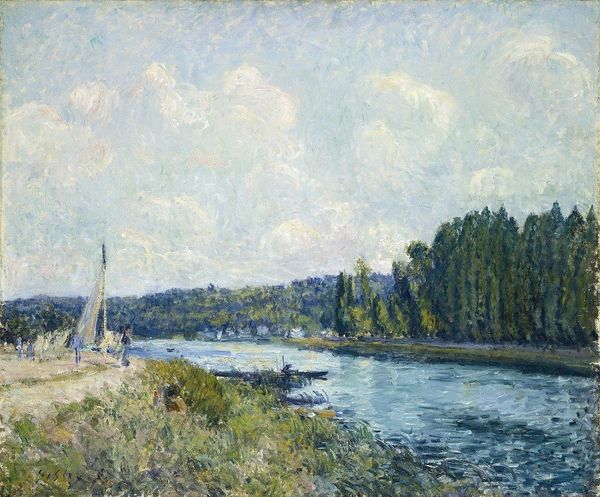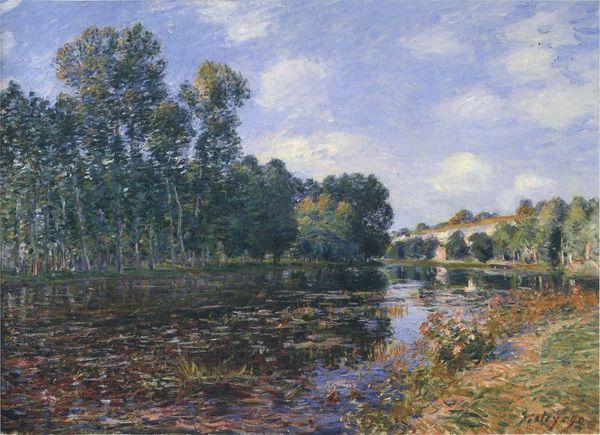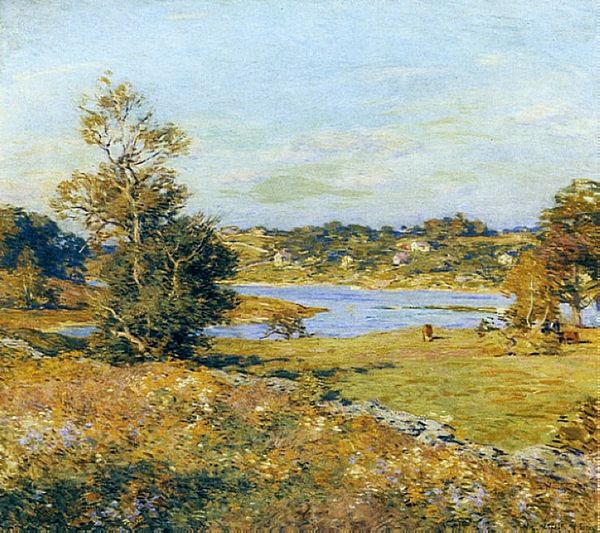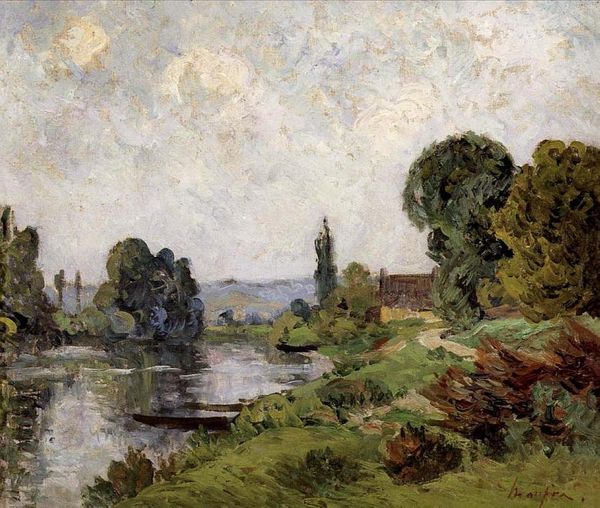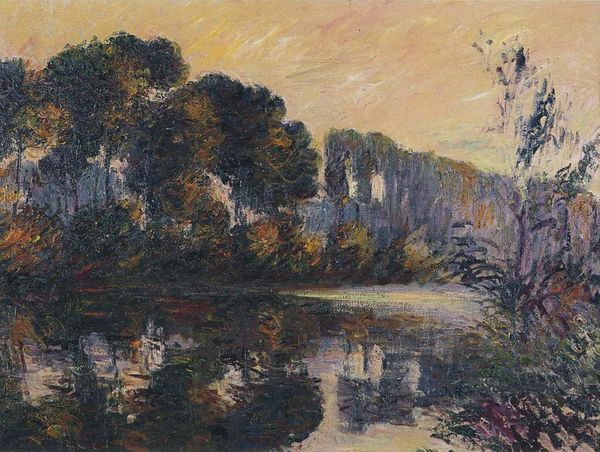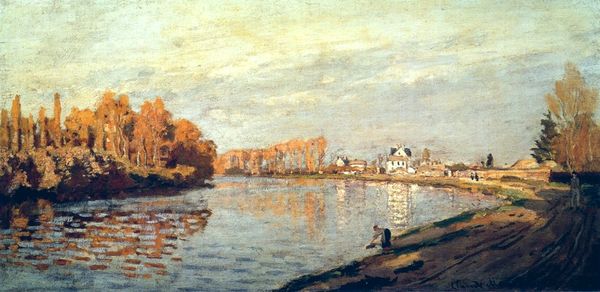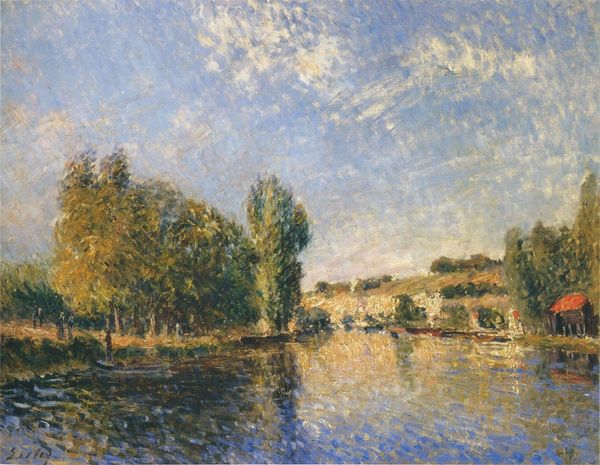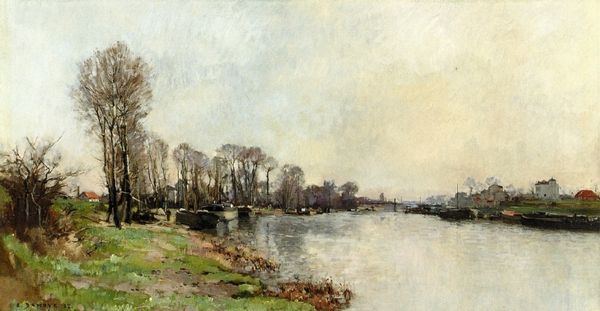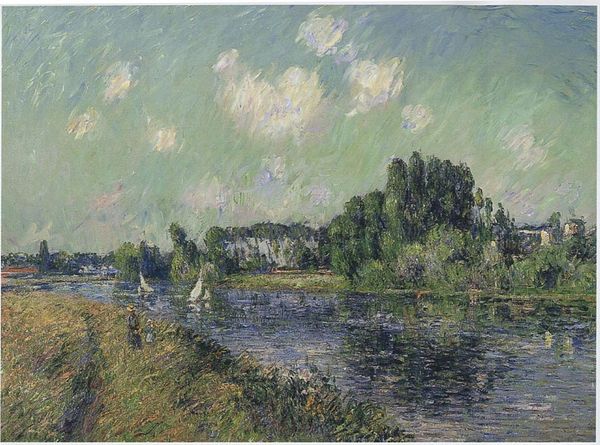
Dimensions: 46 x 65 cm
Copyright: Public domain
Editor: Here we have Alfred Sisley's "The Seine at Bougival" from 1873, rendered in oil paint. It’s a tranquil scene; the way the trees are mirrored in the water creates such a sense of calm. How do you interpret this work, especially considering its place in Impressionism? Curator: It’s deceptively simple, isn't it? While aesthetically pleasing, this landscape reveals a critical juncture in the history of art and the rise of Impressionism. Consider the socio-political climate of France at the time. The Franco-Prussian War had just ended, and there was a yearning for national recovery, a shift toward celebrating the beauty of everyday life. Doesn't Sisley's choice of the Seine, a working river, speak to that desire for renewal and a focus on the present? Editor: That’s interesting, I hadn't thought about it in that context. So, choosing a scene from modern life, the river as a trade artery, over, say, a grand historical subject, was itself a kind of political statement? Curator: Exactly! These artists, like Sisley, were consciously rejecting the academic traditions upheld by institutions like the Salon. They chose "en plein air" painting, capturing fleeting moments in natural light. The rise of Impressionism, and works like this, mark a shift in power: artists taking control of their subject matter and style, rather than being dictated to by the established art world. The very act of painting outdoors, focusing on transient light effects, challenged the perceived authority of the academies. Editor: I see, it’s not just a pretty landscape. It's about claiming the right to represent the world as you see it, moving away from historical painting to focus on capturing an experience in the here and now. It does make you think differently about the cultural role of landscape. Curator: Precisely! What started as a painting style eventually shaped a movement with strong statements on cultural and individual expression. Editor: That gives me so much to consider, really makes you think about the social and political implications of even the most subtle details. Curator: Indeed. Art often whispers its truths.
Comments
No comments
Be the first to comment and join the conversation on the ultimate creative platform.
